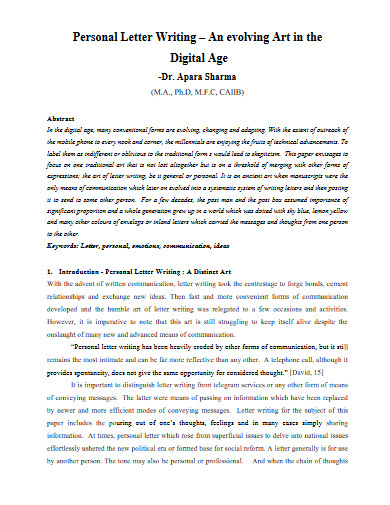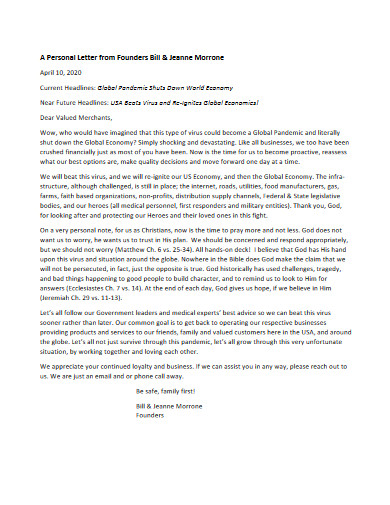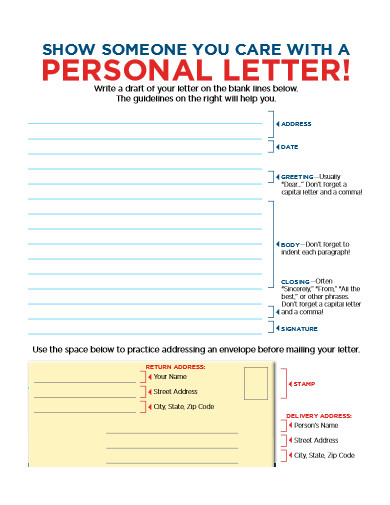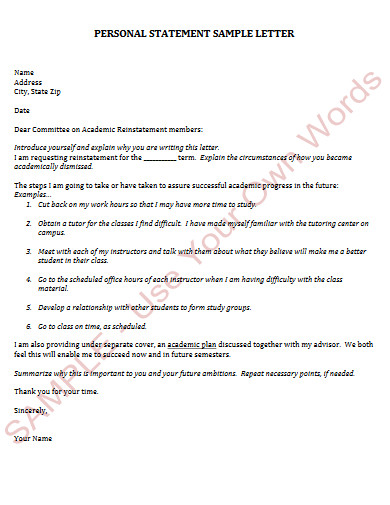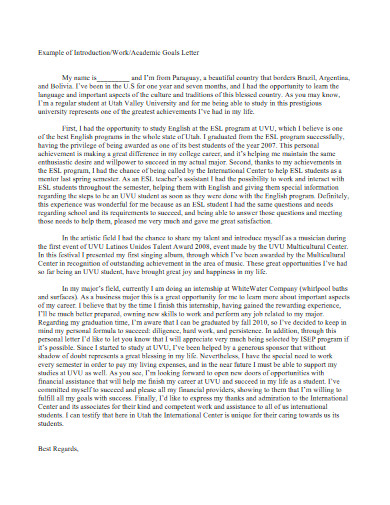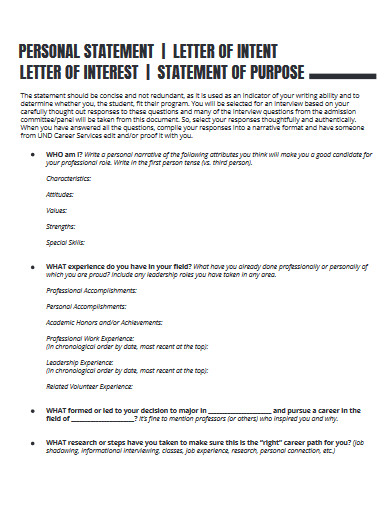10+ Personal Letter Examples to Download
Letter writing comes with different reasons. These reasons may be personal, business related, saying thank you to someone, congratulating someone, apologizing, or asking for references. The only thing that is common about these reasons is that you need to write a letter to make a positive impression. Whether they may be for personal or business reasons, they differ a little bit in format. This article will tell you how to write a personal letter, what to write in a letter and what to avoid.
10+ Personal Letter Examples
1. Free Personal Apology Letter
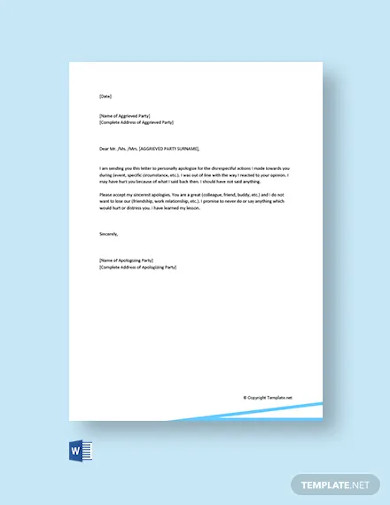
2. Free Personal Reference Letter For Student
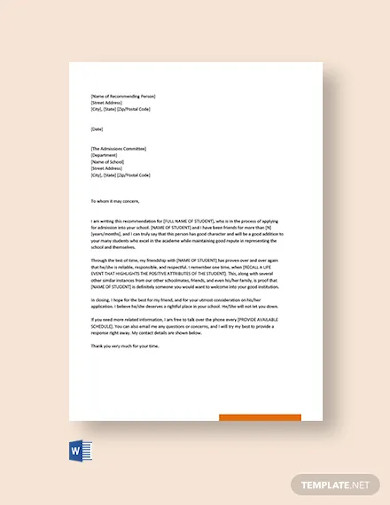
3. Free Personal Emergency Leave Letter
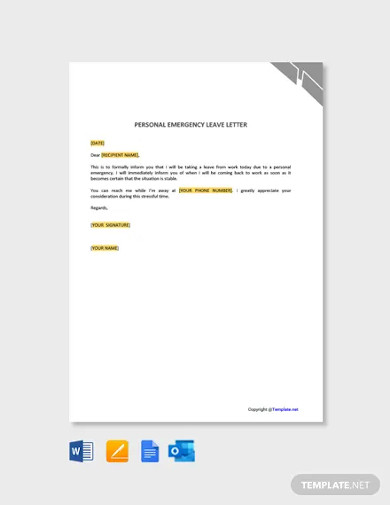
4. Free Personal Apology Letter To Boss
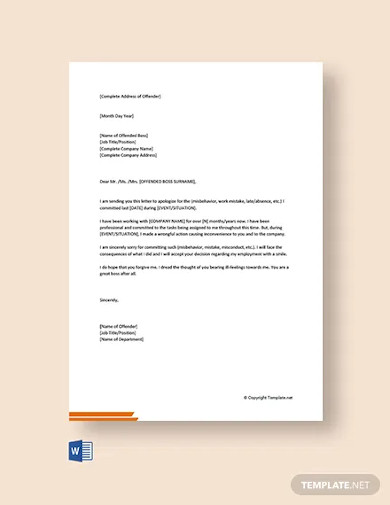
5. Free Teacher Resignation Letter for Personal Reasons
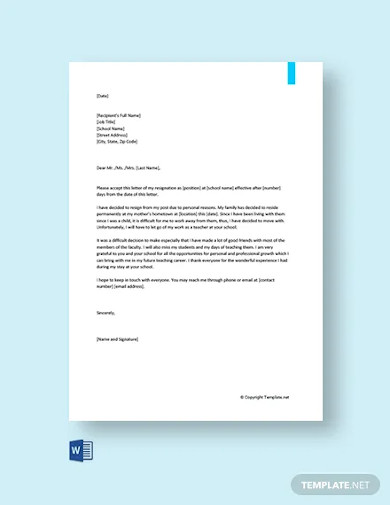
6. Personal Letter Template
7. Personal Letter from Founders
8. Personal Letter Example
9. Personal Statement Sample Letter
10. Basic Personal Letter
11. Personal Letter in PDF
Definition of Personal
Personal means something private or confidential. Relating to someone’s personal information. Personal means relating to a single or one individual rather than a group of people. In addition to that, it also means a single person’s personal life outside of work.
Definition of Letter
A letter is a written message made from one person to another. This is usually put in an envelope and sent via mail. A written message typed by someone for another person. A printed communication. This is often used for sending someone a message either for personal use or something else.
Definition of Personal Letter
The definition of a personal letter is this is a type of informal or formal letter. This usually concerns personal matters, or matters of the heart. Always sent from one person to another person or a group of people for that matter. Personal letters are often longer than a note or an invitation, and are almost always handwritten. It can also be typed, written and sent through mail or email.
Definition of Apology Letter
An apology letter is a typewritten or handwritten letter. The use of this letter is to apologize for something that someone has done. This type of letter can also be used for mending a troubled issue between companies or individuals. Apology letters are usually written in a heartfelt tone.
Definition of Reference letter
A reference letter is often called a recommendation letter. This type of letter is written to confirm an individual’s character, achievements and skills. A recommendation letter is usually given when a candidate applies for a job or for a college student applying for a scholarship.
Importance of Writing Letters
The importance of writing letters gives you an opportunity to bare your feelings through writing. Writing letters is also a way to connect to people in a way that is different when you speak to them. In addition to that, you can also use letters as proof in court for information. Also, letters are a good way to record events that have happened to you. Writing letters can simply get you the attention that you need for important moments in your life.
Tips for Writing Personal Letters
Writing letters whether they are for personal use or for a reference, a loan in the bank, or an apology can be a challenge at some point. But it is not a reason to throw your hands up in frustration. There are some ways to help you with how you should write it and what to avoid. These are simply tips to make you familiar or to help you learn how to write that letter. To get the ball rolling, let me show you some tips.
- Start by making a draft – drafting what you want to write and say is easier. Drafting helps by letting you see what you want to write and what you should write.
- Watch your Tone – if you are writing an apology to a company or someone working in the company, opt for a professional tone. This will not only make you sound more sincere but, it also makes you sound professional. How you write and your tone of writing also matters.
- Fill out the necessary details – In your letter, you would need to fill out the details. The address, the name of whom you are writing to and the reason for the letter. Do not make your letter sound unprofessional if you are writing a business letter.
- Avoid rude and unprofessional words in writing – Do not be rude, nor do not add anything rude or unprofessional in your writing. Regardless of what type you are writing, rude commentary should be avoided at all costs.
- Revise your letter – You may be excited to send out your letter now that you have written it down as carefully as possible. But before you should do that, revise it. This is the part where you check if you have any misspelled words, grammatical errors, and punctuations. This is also the part where you ask someone to read it out loud and check if the tone in your letter is professional. Revision is crucial in any written document or letter writing.
FAQs
What is a personal letter?
A personal letter is a type of letter which a person writes to pour out their emotions. They often send these letters to someone close to them.
What should I place in an apology letter?
When you write an apology letter, you must place the reason for saying you are sorry. State the issue and the solution as well as your apology. Avoid throwing any blame in the letter. Say thank you at the end of your letter and wish them well.
Why is a reference letter so important?
Reference letters are the types of letters used when you are looking for a job. If you are a student, these types of letters can also be used as a tool to apply for a scholarship grant. Reference letters show off your skills, characters and achievements to your future employers.
People write letters for different reasons. There reasons could be personal, business or even educational purposes. The common thing between these reasons is that they all matter in such an important way. Each has a format of its own or has a common ground with others. When you write your letters, make sure to revise them. Regardless if its personal or business related.



